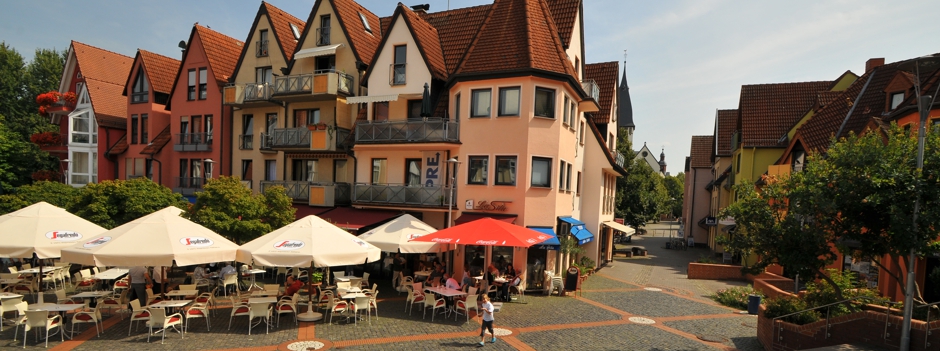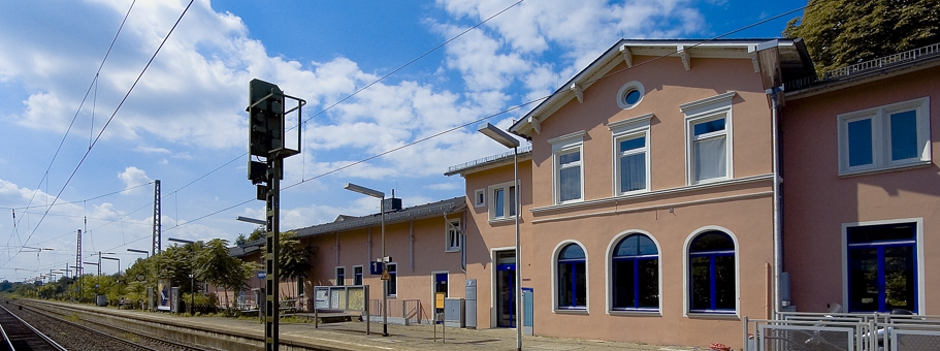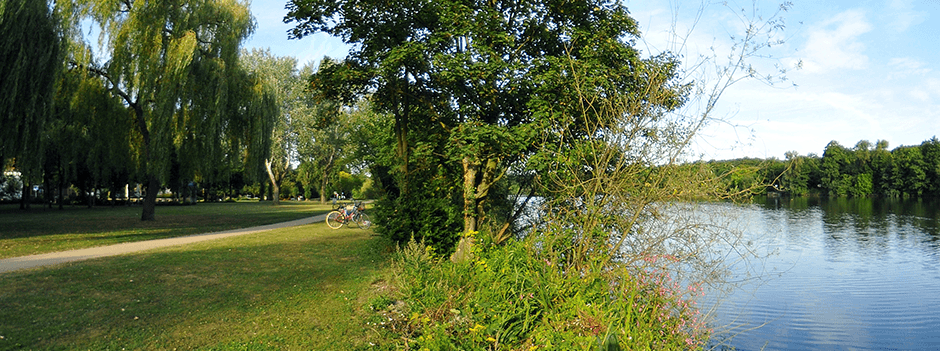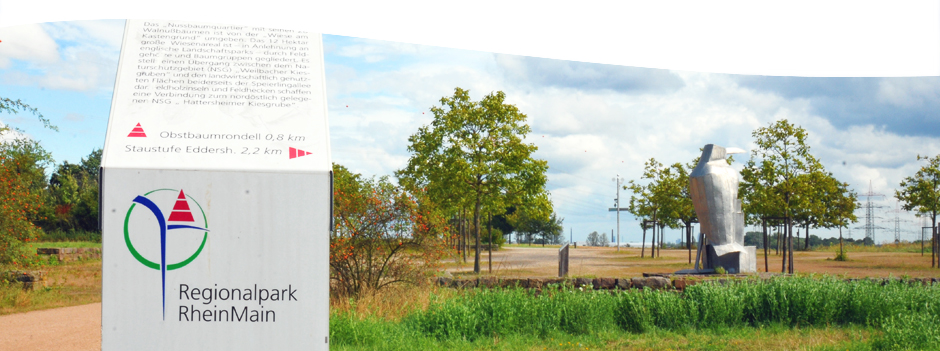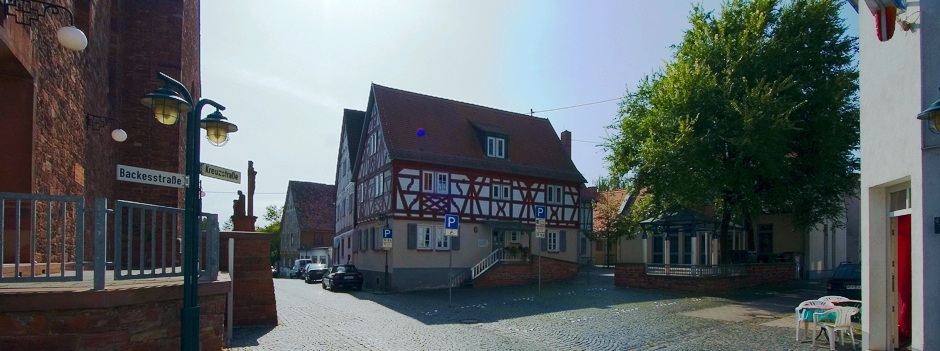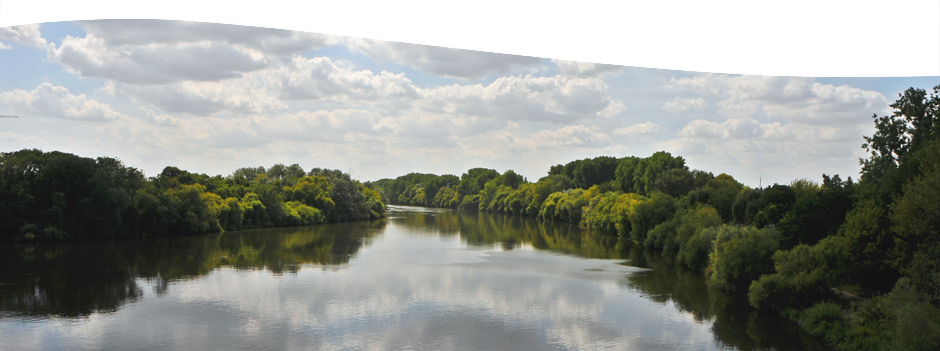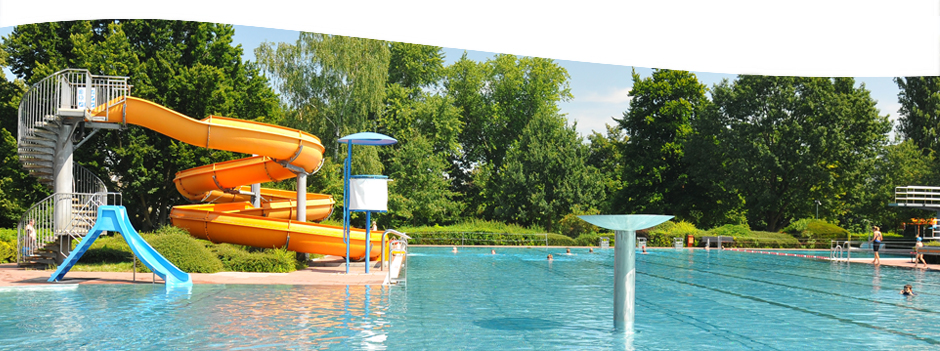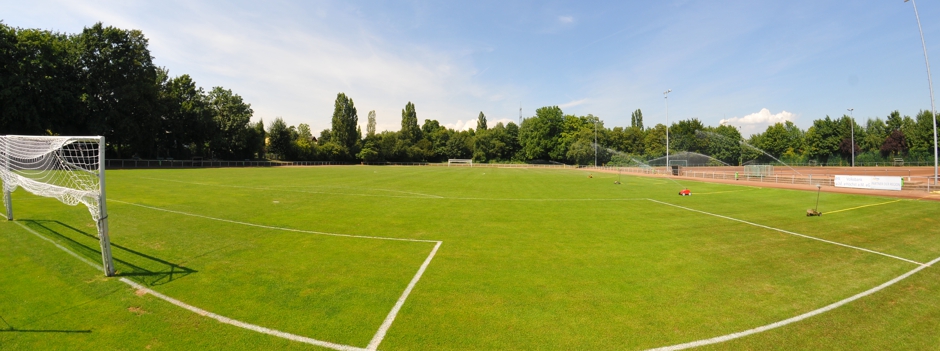Local history of Eddersheim
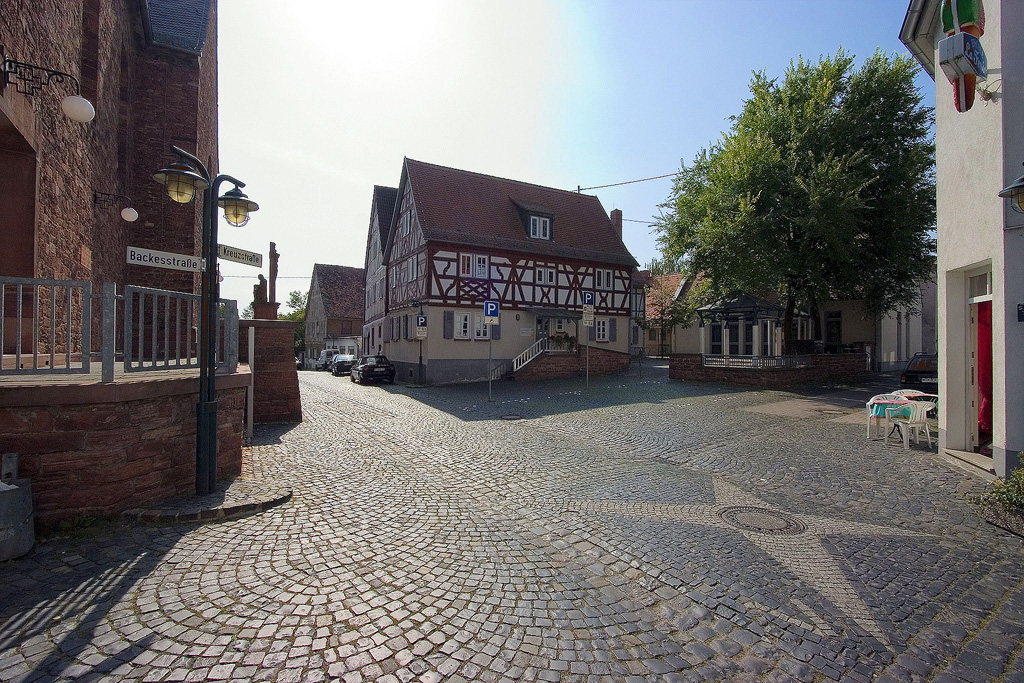
A bronze coin of the Roman Emperor Augustus (63 BC to 14 AD) was found on the edge of the Eddersheim district, in the forest by the waterworks. It bears witness to the fact that in Roman times two roads of transregional importance led through the Eddersheim district. The road from Mainz via Hochheim to Höchst and Frankfurt was intersected by the rural road that connected the Hofheim Roman fort with Groß-Gerau; at the old ford in Eddersheim it crossed the Main. Traces of a settlement can only be found from Frankish times onwards. These traces included dig finds with artefacts including necklaces, bracelets, clay vessels, spear and lance points and a sword; all these finds have been dated to around 450 AD.
First mention 1145
Eddersheim – then spelt ‘Heddereshem’ – was mentioned for the first time in a deed of donation to St. Alban's Abbey in Mainz in 1145.
The Weistum – an enumeration of legal customs dated 13 August 1445 – stated that the entire village and all its land belonged to the cathedral deans of Mainz and that the Eppstein-Königsteiner held jurisdiction as bailiffs. They were succeeded in 1535 by the Counts of Stolberg-Königstein, who ruled jointly with the cathedral dean of Mainz until 1581. When the male lineage died out, the county fell entirely to the Electorate of Mainz. After secularisation, Eddersheim came to Nassau-Usingen and belonged to the Duchy of Nassau from 1806 until it passed to Prussia in 1866.
Eddersheim’s coat of arms

Eddersheim’s coat of arms, which depicts a blue ring on a silver background, with a green wolf trap running through it, is also found in the court seal and later on boundary stones in the district. It has practically been known since 1658. There are two interpretations of it. One interpretation is that it represents the village boundary, whereas according to another opinion, the wolf trap is actually a forestry hook symbolising regulated forestry care.
Hugo von Eltz
The rule of the cathedral deans of Mainz had a lasting influence on the development of the place. They appointed the mayor, who also became a tenant of the priory of cathedral deans. From 1743 onwards, the sovereign, cathedral dean Hugo von Eltz, controlled the fate of the village. Eddersheim received several donations from him, including a portrait of the cathedral dean, a silver perpetual light, chalices and candlesticks, which are still in the possession of the church today. The statue of Nepomuk and the crucifixion group in the parish church were also among the donations of the noble lord. During his 35-year tenure, he frequently moved his residence from the priory in Mainz to Eddersheim. Even today, the spacious garden bears witness to the former stately character. It is bordered by a quarry stone wall toward the Main. The Nepomuk statue stands on this – a replica of the original, which was severely damaged, and which is now in the city museum.

Catholic Parish Church of St. Martin
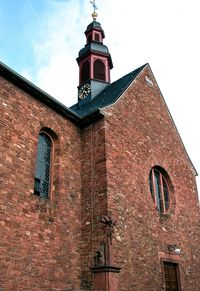
The Catholic Parish Church of St. Martin is located at the centre of the historic village. It dominates the intersection of the two old village streets. At the top and bottom end of the Propsteistraße, there were once two gates. In the 14th century, there was a church, but it was destroyed in 1622. In 1652, Eddersheim acquired a new church building and became and independent parish. Their branches also included the estate to the left of the Main – the ‘Mönchshof’. The new church from 1728 – a small hall building with a baroque ridge turret – was extended in 1934 with the addition of a spacious nave.
Farmers, fishers and craftspeople
A census of the inhabitants of Eddersheim in the 17th century showed that the occupations of anglers and craftspeople were most frequently stated. But many stately homes from the 17th and 18th centuries, some with high-quality half-timbering, also bear witness to the people's way of life, which was shaped by agriculture. The small, one-storey houses which are closely packed together in Maingässchen and Fischergasse are striking. The inhabitants of these houses earned their living mainly from fishing. The Main and the two 41-acre ponds between Eddersheim, Weilbach and Hattersheim, which have long since silted up, were ideal for this purpose. The fact that the beautiful historic centre of the village is so well preserved is also thanks to Eddersheim's inclusion in the village renewal programme in 1983.
Photo: Village centre
Railway construction and changes to the townscape
It was not until the Taunus railway was constructed that Eddersheim saw a striking change to its appearance. The station, which was constructed in 1891 and which is situated far from the old village centre, was followed by settlement development to the northwest along Bahnhofstraße. After the Second World War, and influx of displaced persons and refugees led to a significant increase in population. In addition to social housing, it was the many new citizens who created new homes by building a detached or semi-detached house.
Waterworks
The abundance of groundwater in the former lake area to the northwest of Eddersheim prompted the city of Frankfurt to acquire the land belonging to Hattersheim and Eddersheim. In 1907, they constructed a groundwater waterworks in the typical Art Nouveau style. The building and the 13 meters high steam engine weighing 300 tonnes are now listed.
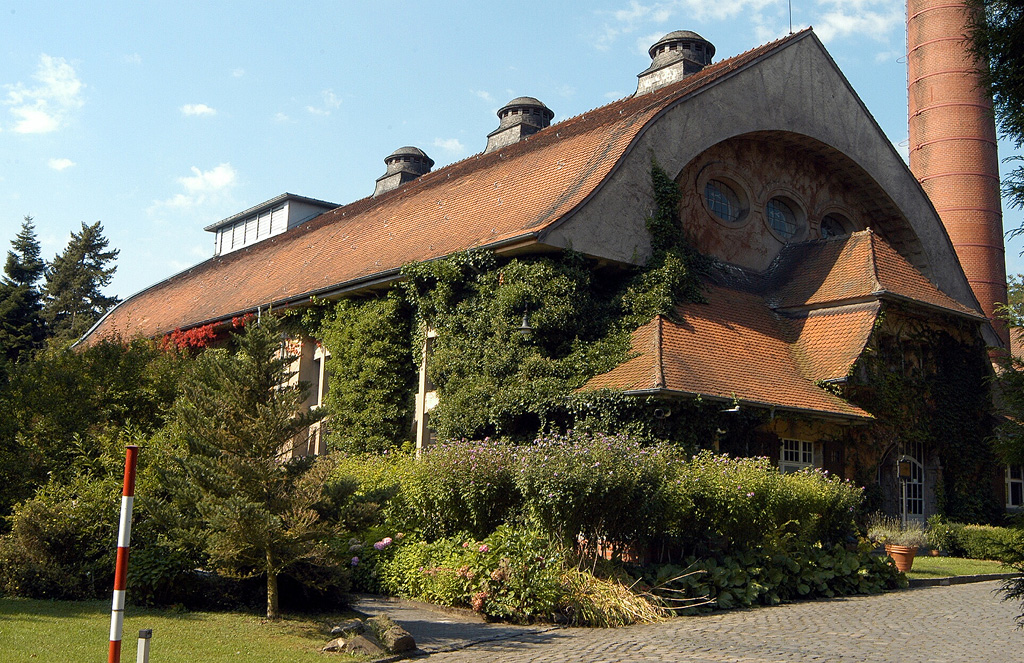
Water gate
The Eddersheim water gate, which has a 350 m-long double sluice, was built during the most recent damming of the Main between 1929 and 1934. It is an outstanding monument of industrial architecture of this time. Due to a shortage of raw materials due to the war, the hydroelectric power station was only completed in 1941. Along the Mönchhof- and Kraftwerkstraße a residential settlement for those who operated the lock was built in 1928 and then extended in 1942. It is also listed and has stables and large gardens typical of servants’ dwellings of the time, which meant that they were self-sufficient.
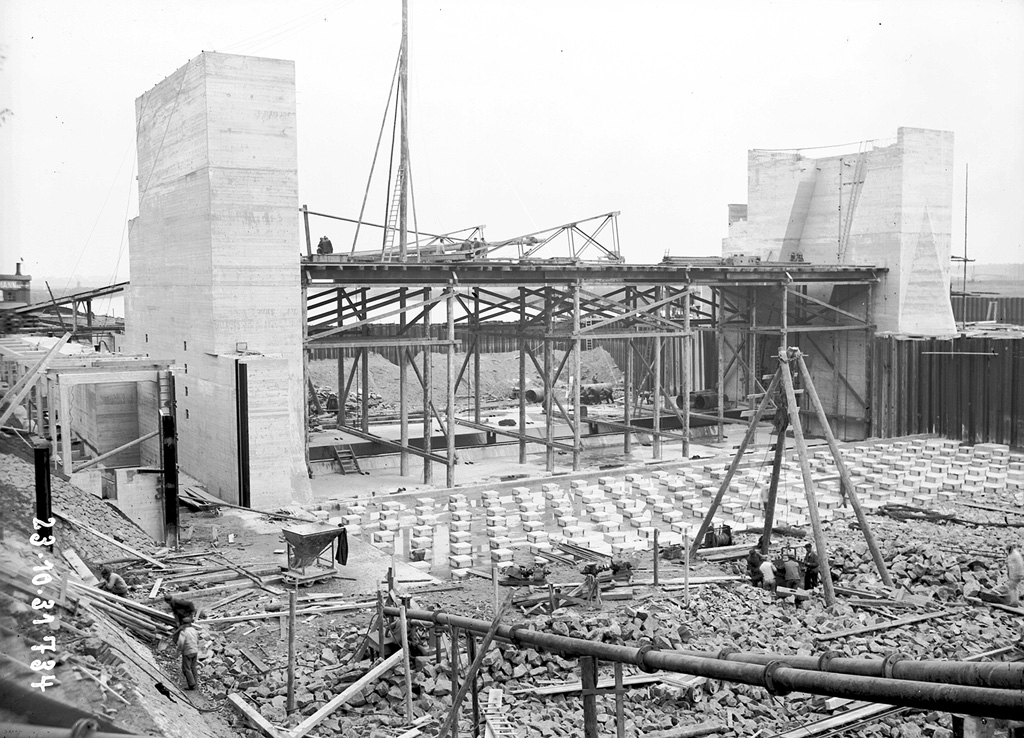
Anton Flettner
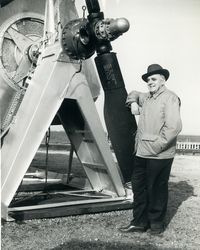
Engineer Anton Flettner (1885-1961) was certainly the most famous son of Eddersheim. He invented the rotor and the Flettner rudder. He was born at Kornmarktstraße 4. His parents, who ran a shipping company, built a luxurious residence in 1910 on the banks of the Rhein, which was known as the ‘Flettner Castle’. At the end of the 1930s, his Jewish wife Lydia had to flee to the USA. He followed her in 1947 and took American citizenship in 1952. In 1961 he was buried in a family grave in Eddersheim cemetery.
